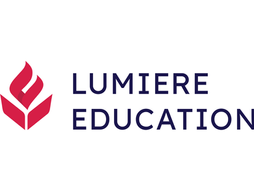Our Review of SCI-Arc's Design Immersion Days
If you’re a high school student interested in design and architecture, summer programs are an excellent way to deepen your understanding, work on hands-on projects, and experience college-level learning. Programs like SCI-Arc’s Design Immersion Days (DID) can provide valuable exposure to the field of architecture, while also developing critical thinking and problem-solving skills that are useful in both college and professional environments.
Attending a summer program, especially a reputed and competitive one, can add significant value to your student profile by demonstrating a sustained interest in a subject and showing academic excellence. College admissions boards value these traits highly.
In this guide, we’ll review the SCI-Arc’s Design Immersion Days program, detailing its curriculum, fees, and application process, and providing a list of pros and cons to help you decide if it’s the right program for you.
What is SCI-Arc's Design Immersion Days all about?
SCI-Arc’s Design Immersion Days (DID) is a four-week intensive summer program for high school students interested in exploring design and architecture. Hosted at the Southern California Institute of Architecture in Los Angeles, the program encourages creativity and provides students with foundational architectural skills such as freehand sketching, drafting, and computer-aided design. Throughout the program, you will develop architectural proposals and complete various design projects under the guidance of experienced faculty.
SCI-Arc is known for its avant-garde approach to architecture, promoting experimental and innovative design thinking. The program is taught in a studio-like environment, giving students a taste of what it's like to work in an actual architecture school. In addition to learning from faculty, students get access to world-class facilities, including a digital fabrication lab, 3D modeling tools, and the renowned Robot House.
Who can apply to Design Days?
DID is open to all high school students, regardless of GPA or academic standing. While no prior experience in design is required, students with an interest in architecture and design stand a better chance of being accepted.
What are the program fees?
The program costs $3,350. A limited number of partial and full scholarships are available, depending on need. To apply for a scholarship, students must submit several documents, including a personal statement, high school transcripts, and a letter demonstrating financial need.
What are the program dates?
The program runs for four weeks in the summer, from June 17 to July 12, 2024. Classes are held Monday through Friday from 9 a.m. to 4 p.m.
Is the program prestigious?
While DID is not highly selective, the program’s affiliation with SCI-Arc, one of the leading architecture schools in the U.S., adds a certain degree of prestige. SCI-Arc reputation for cutting-edge design and experimentation ensures that students receive top-tier instruction and exposure to contemporary architectural practices. However, the lack of stringent admission criteria does limit the program's exclusivity.
What can I study at DID?
DID emphasizes a mix of analog and digital design techniques. This involves familiarizing yourself with the design and production process of creating structures. You will learn foundational analog physical building and traditional drawing, as well as be introduced to augmented reality techniques, 3D modeling, and 3D printing. The curriculum is largely project-based, allowing students to experiment with design through hands-on projects and regular critiques from faculty and peers.
The curriculum pays special attention to skill-building, and you can expect to improve your freehand sketching, architectural drafting, computer drawing, and physical modeling abilities. Key learning tools include software like Rhino, Photoshop, and Illustrator, along with access to 3D printing and augmented reality tools. Throughout the program, students will also attend weekly portfolio workshops to help them present their work in a professional format.
The program ends with a final exhibition where you present the projects you worked on. SCI-Arc faculty, architects, critics, and theorists will attend this event. Previous design projects students have worked on include building shading structures, representing human postures through physical models, combining consumer objects, and creating urban congregation areas along the LA River.
Since SCI-Arc is based in Los Angeles, DID emphasizes learning from the city. To this end, the program conducts several field outings to venues like the Walt Disney Concert Hall, Hammer Museum, Bestor Architecture, and art galleries across the city.
What are the pros and cons of SCI-Arc’s DID program?
Now that we know what the program is about, let’s dive into some reasons to apply, and a few others that make other programs worth considering!
Pros:
1. You will participate in a unique learning approach
SCI-Arc is known for its non-traditional and project-based approach to architecture, encouraging students to expand their design thinking capabilities. The DID coursework blends analog and digital techniques, helping you drive more creative work at the cutting edge of this discipline.
2. You will have access to world-class facilities.
The SCI-Arc campus has a digital fabrication lab, a fabrication shop to build models using wood and metals, and a 3D space for project simulation, helping you visualize your projects and bring them to life.
3. You get to visit buildings and galleries in LA.
Field trips part of the program include visits to architect Frank Gehry’s Walt Disney Concert Hall, Hammer Museum, and Bestor Architecture, which will help you connect theory to practice.
4. You get to undertake several design projects.
Students work on several projects, allowing them to build an impressive portfolio—crucial for college applications. Previous projects completed by alumni include designing rugs based on people’s seated positions, origami-based objects, and cardboard confetti boxes.
5. You will receive mentorship opportunities.
The program provides one-on-one mentorship from faculty, who help guide students through their projects and offer critical feedback during reviews.
6. You get to share your work.
At the end of the program, SCI-Arc organizes an exhibition for its DID students to present the projects they worked on during the program. Faculty, independent architects, and critics will attend this event, making it a sound opportunity to network and make connections in the industry.
Cons:
1. The program is expensive
The program costs $3,350, not including other expenses. This makes it quite expensive, especially for out-of-state or international students who may incur additional travel and accommodation costs.
2. It isn’t very selective.
The program is open to all high school students without strict academic requirements, which may detract from its prestige for those seeking highly competitive programs.
Our review — what do we think of the program?
Design Immersion Days offers an enriching introduction to architecture for high school students, combining hands-on design work, professional mentorship, and access to top-tier resources. If you are genuinely interested in architecture or design, DID provides a great platform to build foundational skills and a professional portfolio. However, students should weigh the program's costs and relatively low selectivity when deciding whether it’s the right fit. For those looking for a competitive edge, more selective programs may be a better option, but for students who value creative freedom and practical exposure, DID is certainly worth considering.
One other option – the Lumiere Research Scholar Program
If you are interested in doing university-level research in design or other related subjects, which can become a topic to talk about in your college application, then you could also consider applying to the Lumiere Research Scholar Program, a selective online high school program for students founded with researchers at Harvard and Oxford. Last year, we had over 4000 students apply for 500 spots in the program! You can find the application form here.
Kieran Lobo is a freelance writer from India.








